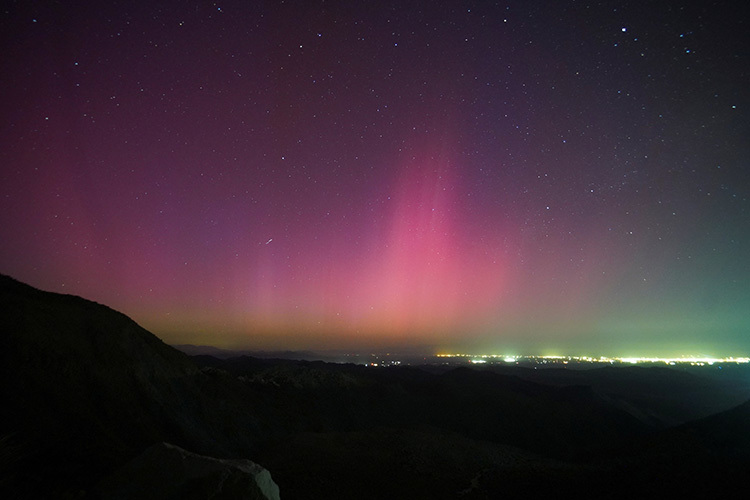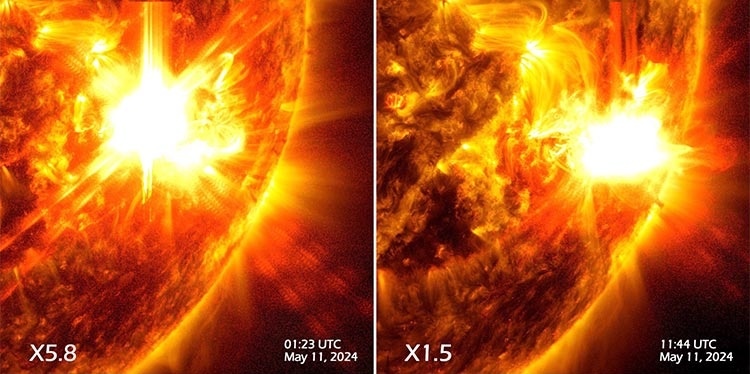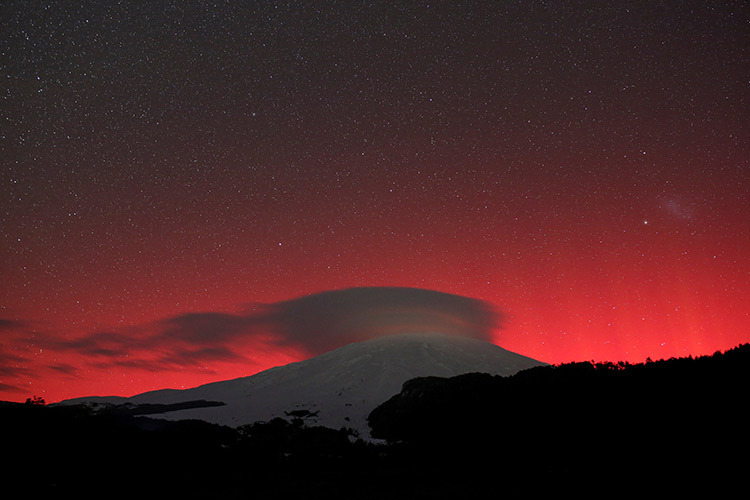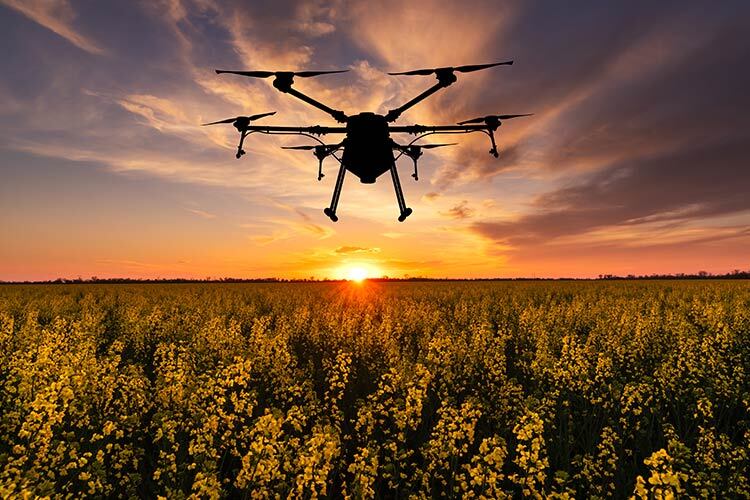The biggest geomagnetic storm in two decades, sparked by solar flares, caused dazzling light displays in parts of Latin America overnight on Friday, including a rare appearance in Mexico.
In Mexicali, thousands of miles from the Arctic regions where the northern lights are common, gradients of pink and purple illuminated the night sky.
Local media outlets in Argentina reported similar hues illuminating the sky in the Patagonian city of Ushuaia.
What Are Geomagnetic Storms?
According to the U.S. National Oceanic and Atmospheric Administration (NOAA), geomagnetic storms are caused when explosions of plasma and magnetic fields from the sun’s corona are directed at Earth, where they can trigger such aurora displays.
NOAA space scientist Robert Steenburgh explained that “during this time in the 11-year solar cycle, we’re coming up towards solar maximum. There are a lot of sunspot regions on the Earth-facing side of the Sun.”
Every 11 years, the sun’s magnetic field goes through a cycle called the solar cycle and completely flips, which is when it reaches its maximum. This process affects the sun’s surface and activity, leading to an increased appearance of sunspots.
This more Earth-facing region has been producing many of the powerful solar flares and ejecting mass after mass of plasma from the solar atmosphere towards the Earth.
Each of these masses carries a magnetic field and can connect to the Earth’s magnetic field. The better the connection, the more energy is transferred into our atmosphere and the more incredible the displays of auroras.
“It’s not unusual, but what made this one exciting was the amount of seven (storms) in a row and it’s still producing them too. I mean, it’s not done yet. So, it is the biggest storm geomagnetically that we’ve had in about 21 years.”

What Effects Do Solar Storms Have?
According to the NOAA, geomagnetic storms can affect infrastructure in near-Earth orbit and on Earth’s surface, potentially disrupting communications, power grids, navigation, radio, and satellite operations.
The Sun is the main source of space weather: plasma eruptions and magnetic field structures in the solar atmosphere, called coronal mass ejections (CMEs), and sudden bursts of radiation, called solar flares, can cause space weather effects on or near Earth.
Fortunately, Earth’s magnetosphere, ionosphere, and atmosphere do a great job of protecting us from the most dangerous effects.

The Carrington Event
Space weather caused problems even before the widespread distribution of electric power. The strongest geomagnetic storm on record, the Carrington Event named after the British astronomer Richard Carrington, occurred in September 1859.
During this event, excessive currents were produced on the telegraph lines, causing electric shocks to technicians and sometimes setting fire to their telegraph equipment.
Auroras, another feature of geomagnetic activity, were visible as far south as Cuba and Hawaii. Such a storm today would have significant impacts on our technology. (With information from Reuters)


















